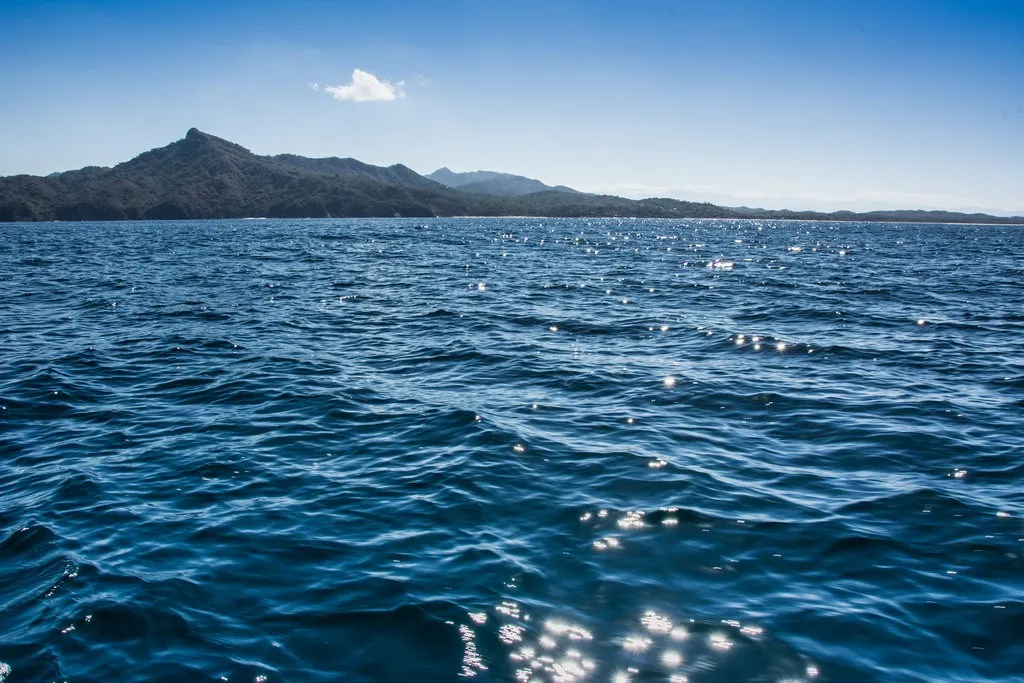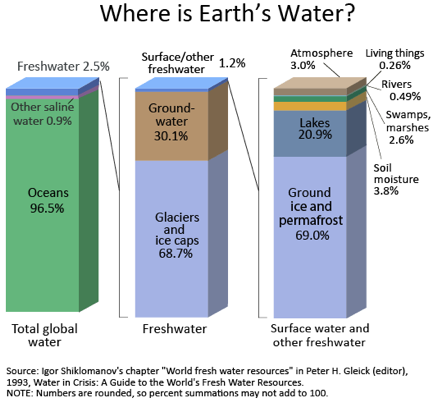The 60-second guide to world water

The ocean covers 71 per cent of the Earth’s surface and contains almost 97 per cent of the planet’s water. But only 2.5 per cent of Earth’s water is freshwater, and just a fraction (1.2 per cent) of that freshwater is surface water available for our needs.
For a recent project, Scientell assessed the state of current and future global water resources and described some existing and potential technologies for creating potable water on small and large scales.
Here we distil some of the interesting information to quench your thirst for water knowledge.

There are 780 million people who don’t have access to uncontaminated drinking water.
Climate change is affecting water supplies. In many places, changing precipitation or melting snow and ice are altering hydrological systems, affecting the quantity and quality of water resources. Glaciers continue to shrink almost worldwide, affecting runoff and water resources downstream. Climate change is poised to intensify floods and drought.
Some countries, including Australia, have installed desalination plants to ensure continuity of water supply in the face of rainfall declines partly due to climate change. Ironically, the energy the plants consume produces carbon dioxide that adds to climate change, unless their energy source is renewable.
There are more than 17,000 desalination plants worldwide. Reverse osmosis is a common desalination process. The technique entails pumping salty water through a membrane that lets water through but blocks salt.
Extracting pure water from wastewater uses just a fraction of the energy needed to convert seawater. However, communities may object to drinking water converted from sewage. In 2006, for example, more than 61 per cent of the residents of drought-stricken Toowoomba in Queensland voted against such a scheme.
The race is on to create cheap, low energy water purification methods.
CSIRO is developing small, portable water purification devices ‘the size of a teapot’ that would be rechargeable, inexpensive and more effective than many existing purifiers. The active component is a membrane, treated with plasma to boost the water absorption rate through carbon nanotubes. These tubes, just 10,000th the width of a human hair, remove contaminants and salt from dirty water.
In 2013, the Indian Institute of Technology Madras announced a nanoparticle water filtration system. The filter relies on silver nanoparticles embedded in a cage made of aluminium and chitosan, a carbohydrate derived from the chitin in crustacean shells. Other nanoparticles can target contaminants such as mercury.
Researchers from the National University of Singapore have engineered a biomimetic membrane that can purify water at low pressure, thus reducing energy costs. Biomimetic methods mimic natural biochemical processes – in this case the layers of cells on the roots of mangrove trees, which purify water.
Improving global access to clean water would be an incredibly powerful and valuable scientific breakthrough.
Resources
- 9 Great Water Filter Technology Advancements (You Need To Know About Today). Available at all-about-water-filters.com/great-water-filter-technology-advancements-you-need-to-know-about-today/
- The new water technologies that could save the planet. Available at www.theguardian.com/sustainable-business/new-water-technologies-save-planet
- Six water purifying designs for the developing world. Available at inhabitat.com/6-water-purifying-devices-for-clean-drinking-water-in-the-developing-world/
- How Stuff Works: 10 Innovations in Water Purification. Available at science.howstuffworks.com/environmental/green-tech/sustainable/10-innovations-water-purification.htm#page=0
- Recycled drinking water: what Australians need to know. Available at theconversation.com/recycled-drinking-water-what-australians-need-to-know-7216
Author:
Date Posted:
February 20, 2016
